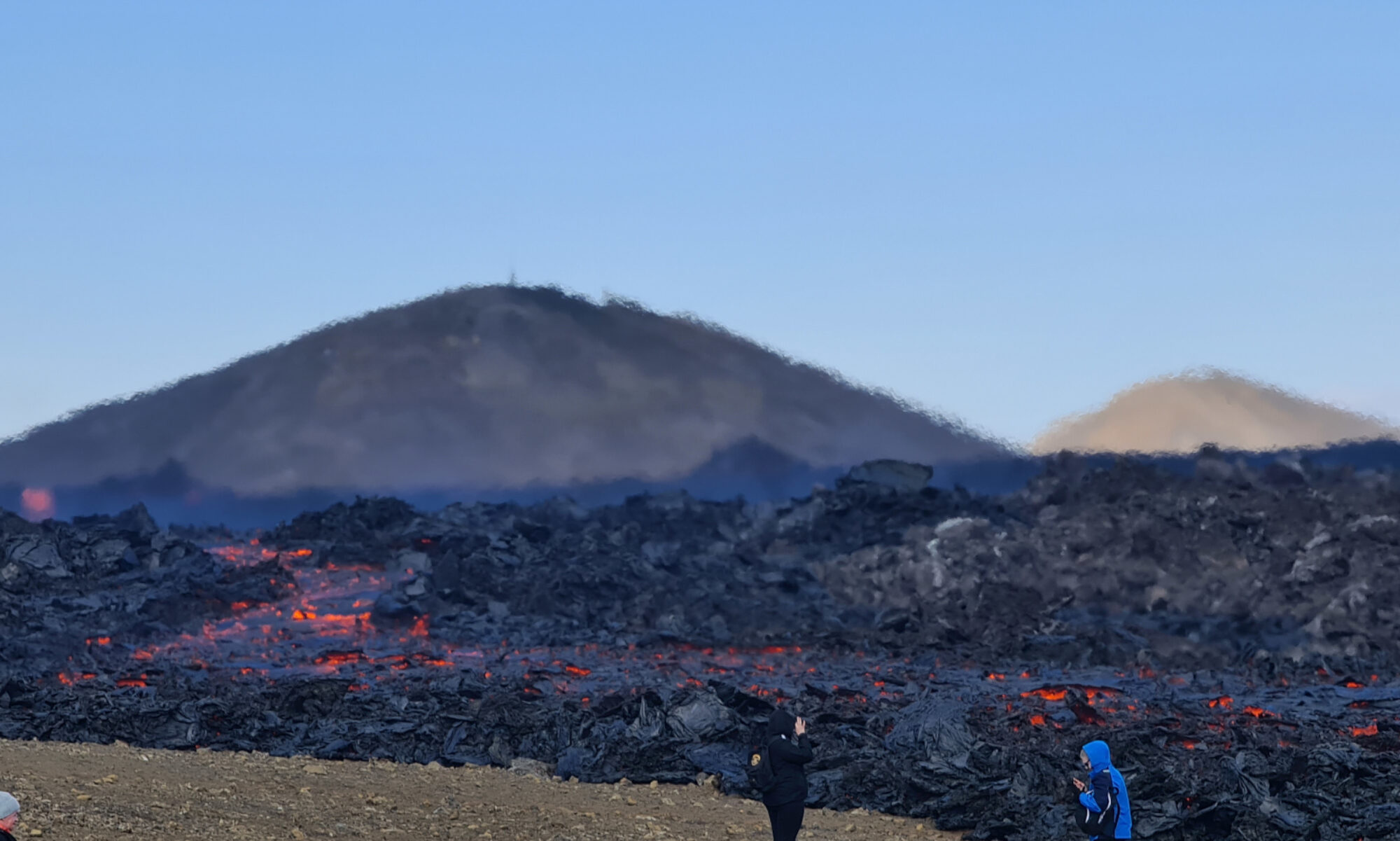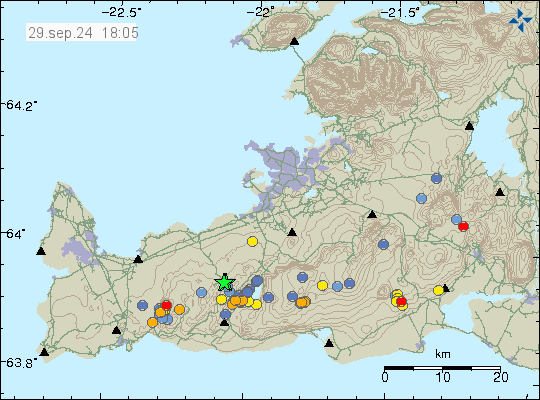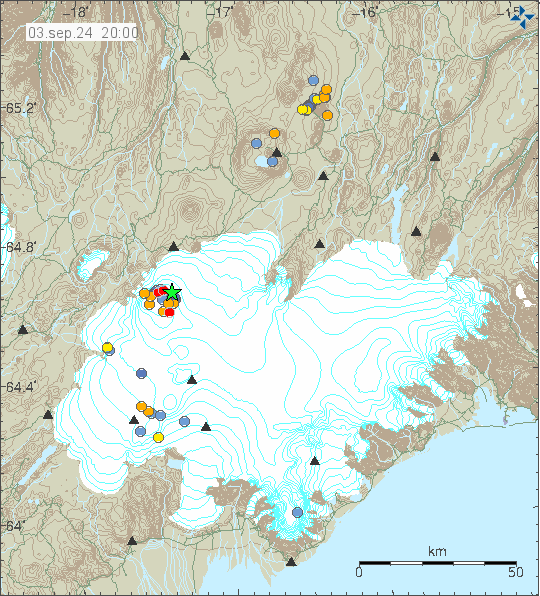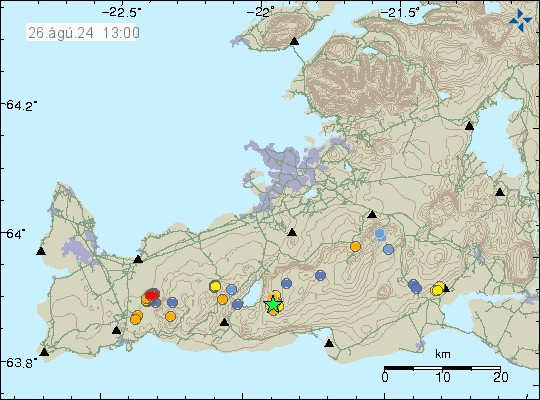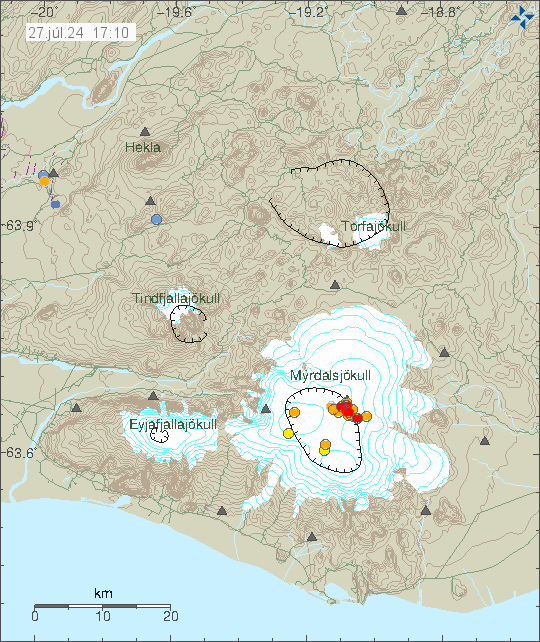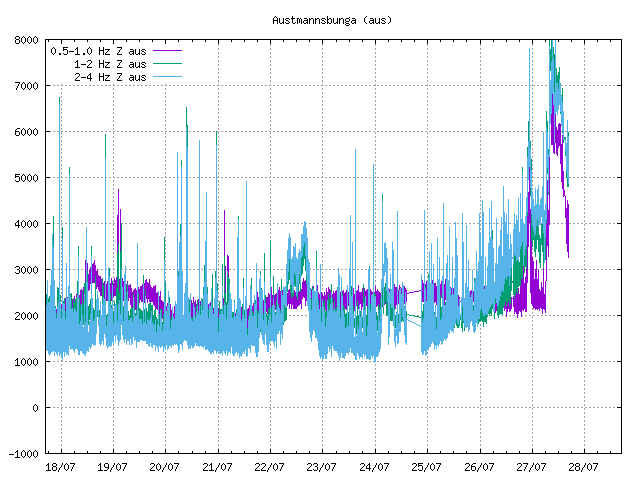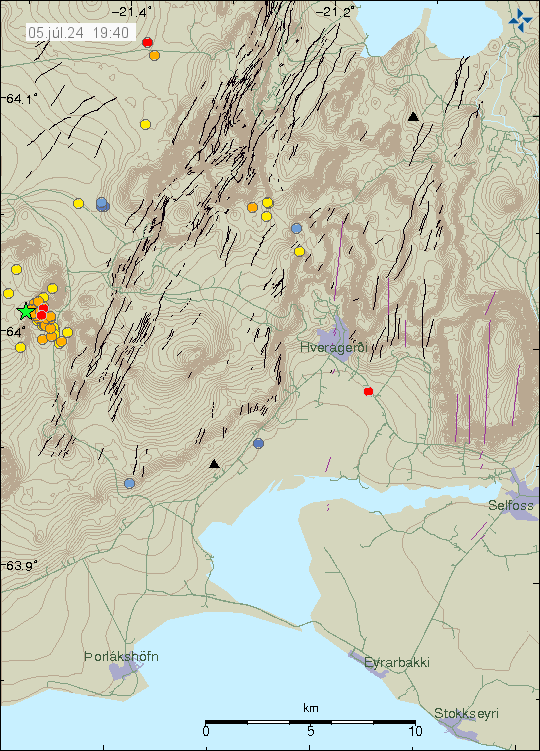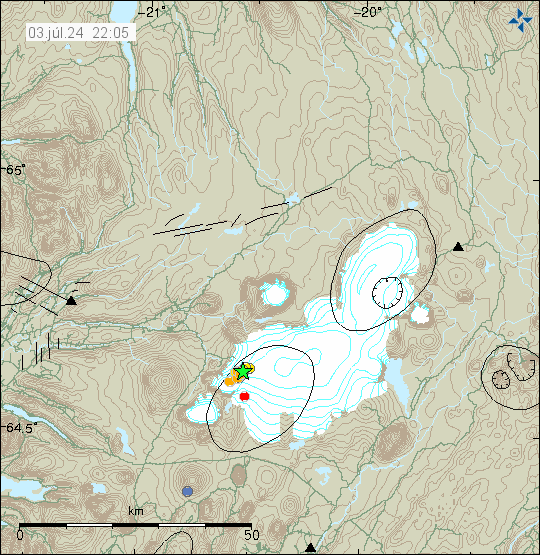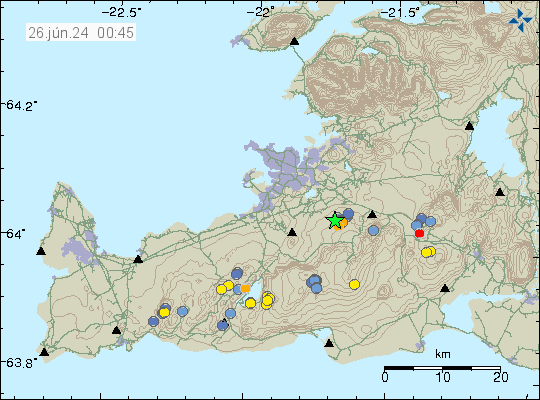Today (30-September 2024) at 05:35 UTC an earthquake with magnitude of Mw3,6 took place in Katla volcano. This earthquake was not felt. This earthquake happens right after a minor glacier flood from Mýrdalsjökull glacier.
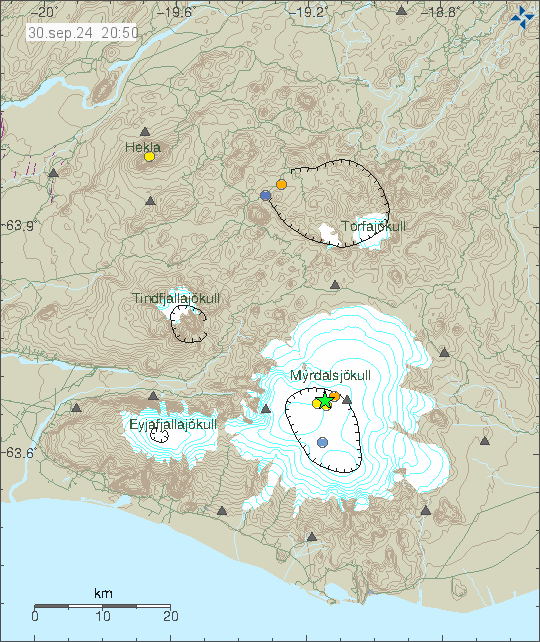
There has not been any more earthquakes following this activity. Overall the activity at the writing of this article is quiet and has been so since the small eruption in July in Katla volcano. Small and large glacier flood can happen without warning from Mýrdalsjökull glacier.
